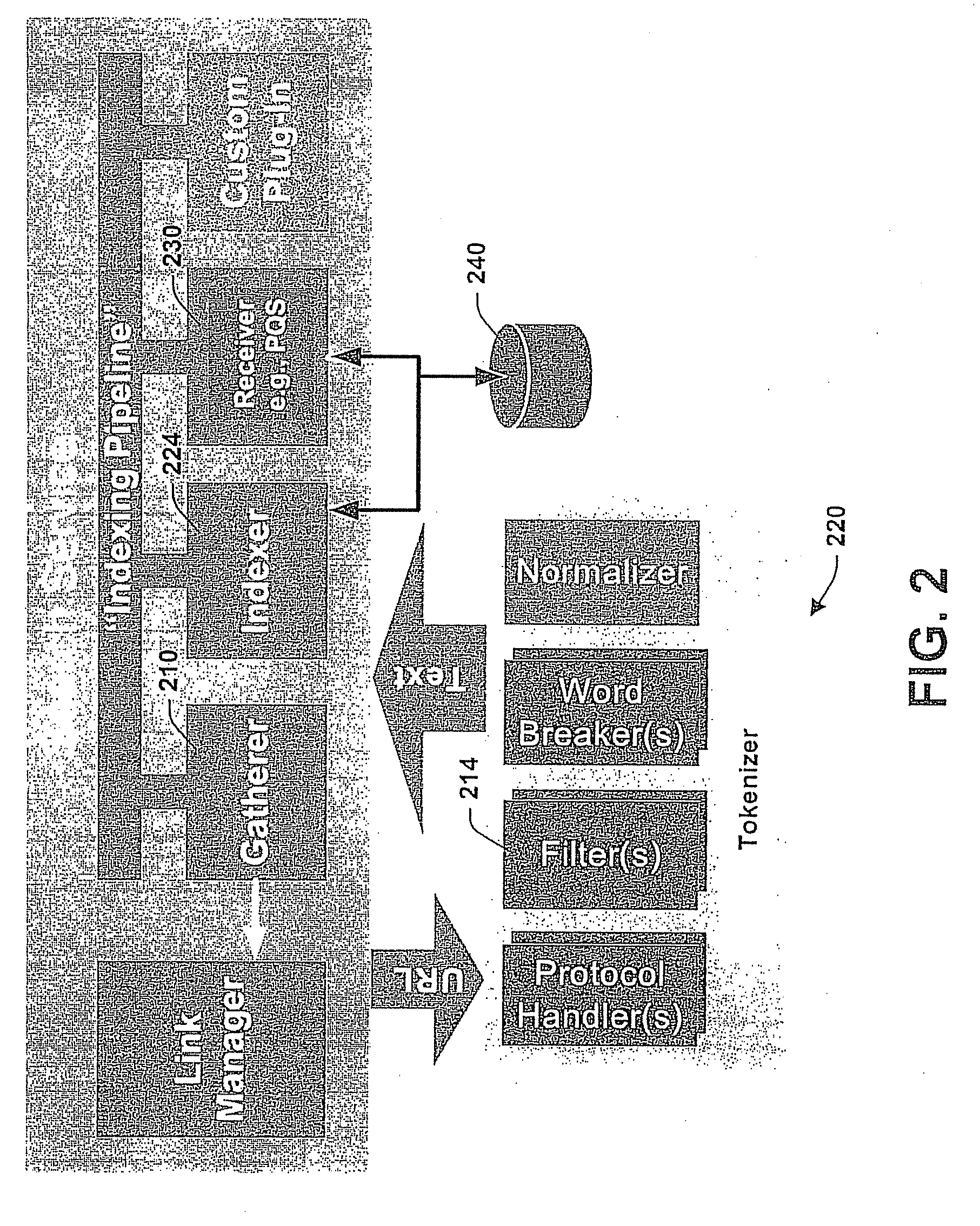[0006] The present invention facilitates information reuse by enabling users to find or retrieve previously contemplated information in a substantially efficient manner. Various components such as an automated indexing tool and user interface provide functionality for automatically indexing previously accessed or considered information and presenting the information to a user in a cognitively relevant manner. In one aspect, the present invention provides a unified index of information that a person has observed, whether it be email, web pages, office documents, calendar appointments, and so forth. Currently, users have to manage several different organizations of information (e.g., a file system hierarchy for files, email folders for email, favorites or history for web pages). The present invention integrates these disparate information sources into a single index that can be queried for information retrieval—regardless of what form the information originated in. Indexing happens automatically without need for intervention by the user. Ongoing user activity (e.g., creating documents, reading email or viewing web pages) triggers the indexing, without any additional work by the user. The user interface facilitates information searches that automatically cut across different information sources while supporting fast information retrieval, filtering and sorting due to the indexing process. In another aspect, since the retrieved information is familiar to the user, rich contextual cues such as date, author, thumbnails and previews are provided with retrieved items that are especially helpful in quickly recognizing items.
[0009] In another aspect of the present invention, a concept known as “useful date or time” can be applied to display the cognitively useful date for different resources. Different dates are useful for different content sources, so an abstract “useful date” can be created for integrated presentation. For example, merely recording when a calendar appointment has been created may not be entirely useful when reminding the user of the actual appointment and information associated therewith. Thus, in this example, if retrieving information relating to a past meeting, it would be more cognitively relevant to indicate or provide the actual time of the meeting than to provide indications of when the meeting was calendared since most users do not have any cognitive links relating to meeting creation. For Web pages, on the other hand, the date they were last read is useful for retrieval purposes. The “useful date” abstraction allows these different dates to be combined successfully in the interface.
[0010] The present invention can be componentized into a set of modules that communicate among one another through well-defined programming interfaces, so that basic infrastructural modules that perform indexing and retrieval can communicate with different kinds of user interfaces and services. The user interface innovations of the present invention provide rich environments for querying indexed information and displaying the information in a plurality of relevant contexts and with a variety of display metaphors. Displays can include timeline visualizations, wherein retrieved items are arranged and displayed according to time along with memorable or landmark events of the user (e.g., holiday, birthday, 9 / 11, and so forth). Other visualizations include grid visualizations that employ a two-dimensional grid to generalize answers to queries beyond individual results and summarize search results by people, topics, and time. Although information can be indexed based upon past observances of the user, the present invention can also provide information regarding items the user may want to see in the future (e.g., search for messages that are relevant to a particular context (e.g., retrieve messages sent by those attending past meeting who are invited to upcoming meeting—in addition, provide messages related to past meeting)).
[0011] Still yet other aspects of the user interface include various input and query options for efficiently locating information. This can include explicit queries, implicit queries, context-sensitive queries, considerations of application context, and item-centric integrations when displaying, retrieving, and / or manipulating items. Other interface options enable users to tag information items as part of metadata associated with the items (e.g., My Favorite Website tagged as metadata to a hyperlink for sports). Tagging can also include implicit or automated tagging of an item (e.g., user looked at an item 20 times during past month, therefore, tag item with exclamation indicating high importance). As can be appreciated, the automated indexer and user interface can be provided on a client machine such as a desktop application, administered from a centralized server, and / or executed as combinations thereof.
 Login to View More
Login to View More  Login to View More
Login to View More 


